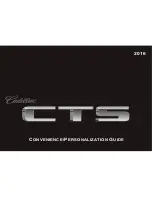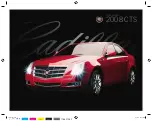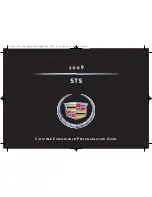
(b) Visually inspect front and rear suspension and
steering system for damaged, loose, or missing parts,
signs of wear or lack of lubrication. Inspect power
steering lines and hoses for proper hook-up, binding,
leaks, cracks, chafing, etc. Visually check constant
velocity joints, rubber boots, and axle seals for leaks.
(c) Visually inspect hoses and have them replaced if they
are cracked, swollen, or deteriorated. Inspect all pipes,
fittings, and clamps; replace with genuine parts as
needed. To help ensure proper operation, a pressure test
of the cooling system and pressure cap and cleaning the
outside of the radiator and air conditioning condenser is
recommended at least once a year.
(d) Inspect wiper blades for wear, cracking, or
contamination. Clean the windshield and wiper blades,
if contaminated. Replace wiper blades that are worn
or damaged. See Windshield Wiper Blade Replacement
on page 5-54 and Windshield, Backglass, and Wiper
Blades on page 5-103 for more information.
(e) Make sure the safety belt reminder light and safety
belt assemblies are working properly. Look for any
other loose or damaged safety belt system parts. If you
see anything that might keep a safety belt system
from doing its job, have it repaired. Have any torn or
frayed safety belts replaced. Also see Checking
the Restraint Systems on page 1-92.
(f) Lubricate all key lock cylinders, hood latch assembly,
secondary latch, pivots, spring anchor, release pawl, rear
compartment hinges, outer tailgate handle pivot points,
latch bolt, fuel door hinge, and folding seat hardware.
More frequent lubrication may be required when exposed
to a corrosive environment. Applying silicone grease on
weatherstrips with a clean cloth will make them last
longer, seal better, and not stick or squeak.
(g) Inspect system. Check all fuel and vapor lines and
hoses for proper hook-up, routing, and condition. Check
that the purge valve works properly, if equipped.
Replace as needed.
(h) Change automatic transmission fluid and filter if the
vehicle is mainly driven under one or more of these
conditions:
− In heavy city traffic where the outside temperature
regularly reaches 90°F (32°C) or higher.
− In hilly or mountainous terrain.
− When doing frequent trailer towing.
− Uses such as found in taxi, police, or delivery
service.
6-8
Summary of Contents for 2008 Escalade
Page 98: ...NOTES 1 94...
Page 164: ...NOTES 2 66...
Page 167: ...NOTES 3 3...
Page 168: ...Instrument Panel Overview United States version shown Canada similar 3 4...
Page 274: ...NOTES 3 110...
Page 332: ...NOTES 4 58...
Page 448: ...NOTES 5 116...
Page 464: ...Engine Drive Belt Routing 6 16...
Page 486: ...NOTES 7 18...
















































